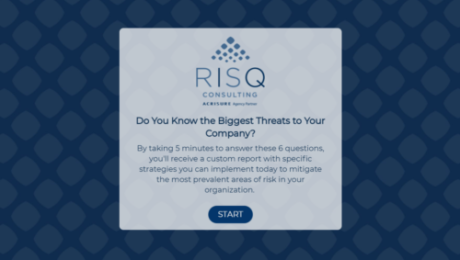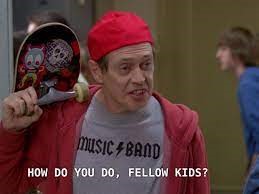Responding to the EEOC’s Increased Focus on Mental Health Discrimination
This article is from RISQ Consulting’s Zywave client portal, a resource available to all RISQ Consulting clients. Please contact your Benefits Consultant or Account Executive for more information or for help setting up your own login.

As society’s understanding of mental health continues to grow, so has government acknowledgment and efforts to protect workers with such conditions. Workers who have a mental health condition, such as anxiety or depression, are often protected against discrimination and harassment at work because of the condition. They may also have workplace privacy rights and a legal right to reasonable accommodations to help them perform the essential functions of their jobs.
The U.S. Equal Employment Opportunity Commission (EEOC) enforces the Americans with Disabilities Act (ADA), a federal law that protects individuals with disabilities. In most cases, individuals with diagnosed mental health conditions are covered under the ADA.
This article highlights mental health conditions, outlines the EEOC’s enforcement plans and offers ADA compliance guidance for employers.
Mental Health and the ADA
The ADA only applies to employers with 15 or more employees. The law defines “disability” as a physical or mental impairment substantially limiting one or more major life activities. When qualified job applicants or employees have a mental health condition meeting those criteria, they have workplace rights under the ADA. The ADA Amendments Act of 2008 broadened the definition of disability to provide legal protections against employment discrimination for more individuals with disabilities, including people with psychiatric disabilities. “Psychiatric disability” and “mental illness” are often used interchangeably. The term “mental illness” is typically used in a medical context to refer to a wide range of emotional and mental health conditions. In contrast, “psychiatric disability” is typically used in a legal or policy context to refer to impairments covered under the ADA.
The National Institute of Mental Health estimates that about 18% of U.S. workers have a mental health condition in any given month. This means that psychiatric disability is one of the most common types of disability covered under the ADA. Since mental health conditions can substantially limit brain function, individuals with such disorders will usually be determined to have an ADA-covered disability. The following mental health conditions may qualify under the ADA:
- Attention-deficit/hyperactivity disorder (ADHD)
- Bipolar disorder
- Schizophrenia
- Generalized anxiety disorder
- Major depression
- Obsessive-compulsive disorder (OCD)
- Panic disorders
- Personality disorders
- Post-traumatic stress disorder (PTSD)
Examples of reasonable accommodations for an employee with a mental disability may include:
- Allowing the employee to telework
- Allowing more frequent breaks
- Alternating supervisor methods (e.g., providing written instructions and providing more frequent or different reminders of tasks and due dates)
- Changing the employee’s work schedule
- Changing the employee’s work location (e.g., moving to a quieter space or allowing the use of a white noise machine or headphones)
- Reassigning to a vacant position
- Permitting a leave of absence under the Family and Medical Leave Act, state law or company policy
EEOC Enforcement Plans
In fiscal year (FY) 2021, employee allegations of unlawful discrimination based on mental health conditions accounted for about 30% of all ADA-related EEOC-filed charges. That figure significantly increased from the 20% reported in FY 2010. Anxiety and PTSD are the leading conditions contributing to this trend.
The EEOC recently released its strategic enforcement plan (SEP) for FYs 2024-28, emphasizing a greater focus on discrimination against vulnerable populations, including employees with mental health disorders. The plan aims to focus and coordinate the agency’s work to advance equal employment opportunities sustainably.
Employer Guidance
Supporting employees battling mental health conditions is not only important for compliance reasons. While organizations seek to avoid liability under the ADA, support and guidance can help foster an inclusive environment for employees with mental health conditions.
Consider the following employer strategies to stay compliant and create a supportive culture:
- Monitor EEOC compliance. Organizations should stay current on all EEOC updates and consult local legal counsel before making any workplace changes. Employers can be proactive with compliance responsibilities by setting calendar reminders well before deadlines and meeting regularly to review compliance with EEOC guidance.
- Review workplace policies. Various workplace policies have the potential to generate discrimination claims. Employers can review and assess policies such as background-check practices, pre- and post-hire personality or behavioral tests, inequitable leave policies and unnecessary physical requirements.
- Review compensation practices. When reviewing their compensation practices, organizations may discover disparities that adversely affect employees based on certain protected characteristics. With a clearer picture, employers can then address those disparities to ensure equal opportunity.
- Train managers. Supervisors and managers can be trained to identify and respond to requests for reasonable accommodation to ensure decision-making isn’t based on outdated biases or misunderstandings about mental health.
- Train all employees. Mental health awareness can help fight the stigma often associated with conditions. Open and honest conversations about mental health can help foster an inclusive work environment. Training can help increase empathy and understanding to ensure all employees feel valued, respected and part of the team.
Summary
As outlined in the EEOC’s latest SEP, the federal government continues to crack down on organizations that discriminate against workers with mental health conditions. As such, employers should continually monitor for EEOC updates and review applicable workplace policies and practices that could cause a discrimination claim. Aside from compliance, mental health awareness is critical for fostering a successful and inclusive workplace environment.
Contact us today for additional workplace resources.
- Published in Blog
Getting Smart About Your Risk
By Joshua Weinstein, Employee Benefits President
Without risk, life would be a drab. Without the opportunity to fail, success, and even life, loses its luster and meaning. For example, if a cliff dive ensured absolutely no harm, would it be quite as thrilling or appealing? If presenting in front of others had a 100% chance of going flawlessly, what significance would your preparation and “learning from mistakes” have? Life is not defined by the easy, but rather by slogging through some suffering. That being said, humanity can generally plan toward good outcomes by acknowledging and addressing life’s unseen, “slippery banana peels” as best as possible. Risk isn’t an inherent problem. It’s not unexpected. It’s quite manageable, and it can teach all of us boatloads. The best run businesses have figured out how to manage risks so they can focus on growth and not on threats.
RISQ Consulting will help you be smart about risks through our proprietary Business HealthIQ™ (BHIQ) process. The BHIQ is a collaborative journey that assesses and inventories your organizations risks across key areas, such as: workforce, compliance, technology, employee benefits, and general risk management. You will be working with a strategic consultant, and a plan will be constructed that encompasses the goals of your organization in conjunction with the most suitable approaches to address risk wisely.
Want to learn more? Try out a mini, self guided, version of the BHIQ to see how the planning begins. You’ll get a summary in a few minutes that provides some tangible next steps on how to be strategic with your risks.
Short samples:
We can mutually decide how best to prevent the unwanted things from happening, such as high rates of employee turnover.
We can mitigate risks such as data loss and errors by advising on consolidated technology platforms and tools that are right for your industry and mission.
We might choose to transfer risks, to a third-party, when doing so adds efficiencies, reduces exposures and costs, and improves your ability to focus on your business’ core mission
Sometimes, retaining or assuming risk is the smart play, even up to a specified amount. Keeping some liability on your financials can reduce premium costs and often improves leadership involvement in creating great outcomes for your business.
- Published in Blog
Why Considering the Housing Market Should Make You Want to Benchmark Your Employee Benefits Plan
By Ashley Snodgrass, Executive Account Manager
Have you ever wanted to peek over your neighbor’s fence to get a better view of their garden? Maybe look at their blossoming peonies, size up their tomato plants, or get a clue as to why their grass is always the greenest? There’s something similar that happens in the world of employee benefits; one of the most asked questions by my clients is, “How do my company’s employee benefits compare to what other companies are offering?” In today’s environment where the battle for qualified talent is raging, knowledge of how your benefits stack up is crucial, because the stakes are much higher than neighborhood gardening.
In 2021, we’ve all felt the impact of the worker shortage in several industries. I think it’s helpful to compare the worker shortage to the housing market. As the housing market fluctuates, the market fluctuates between a seller’s market and a buyer’s market. This is all driven by supply and demand. When the inventory (supply) of homes is high, and there are fewer buyers (low demand), sellers are more likely to drop price, pay closing costs for buyers, and make upgrades to meet the buyer’s needs. Oppositely, when the supply of homes is low and there are more buyers (high demand), there is strong competition for homes. Buyers must be aggressive by paying higher prices, offering flexible terms, and accepting homes in “as is” condition.
Let’s consider how this is similar to the employment market. When there are fewer qualified workers searching for jobs, companies must consider raising wages, offering more flexibility, better benefits, and more educational and mentorship opportunities. Compare this to times of the past when the number of job seekers was higher; employees would accept long commutes, sub-par benefits, or a lower salary just to have a chance at any job, and hopefully move up sometime in the future. Some economists view labor as a commodity, which is why the labor market is subject to the fluctuations of supply and demand.
While this is perhaps an oversimplified explanation, and doesn’t account for a variables that impact the market such as COVID-19 related safety concerns, available unemployment benefits, and childcare challenges, it helps to demonstrate that hiring in 2021 is different than prior to the COVID-19 pandemic. This is why employers must know how their employee benefits compare to other options employees may find when exploring benefits packages that come with employment offers.
Benchmarking is the industry term for comparing what an employer offers to employers in similar industries and geographies. Benchmarking data can be provided by insurance brokerages, insurance companies, and third-party research firms. Most studies look at common plan facets like deductibles, coinsurance, out of pocket maximums, employee cost, employer costs, and types of benefits offered. Some surveys expand beyond insurance benefits and focus on other employee rewards such as Paid Time Off, Parental Leave, Retirement, and Wellness Benefits.
Looking to get an insight into your own health plan? Data isn’t always “Apples to Apples”. Here are a few points to consider when comparing data to what your own company offers:
- Geography – Insurance premium pricing is based on the cost of healthcare in that region (Example: Premiums in Alaska are higher than average because healthcare costs are higher than average, and therefore it wouldn’t be correct to compare Alaska costs to a low cost state like Arkansas, and draw any meaningful conclusions).
- Industry – In sectors where there is greater competition for talent, benefits are more generous. Employees in highly technical industries will demand richer benefits.
- Company Size – Size of company aligns with purchasing power, so be aware that larger companies may be able to offer more benefits or special programs than smaller employers. Additionally, groups under 50 employees are provided rates strictly based on the age of the employees, whereas larger companies pay costs based on claims. Costs for smaller companies may be higher simply if the population is older.
- Employer Type (Meaning Private vs. Public Entities or Union vs. Non-Union benefits) – Different types of employers may have different rules to abide by, or other options available to them, that aren’t available to all employers. Try to compare your company with employers who are most similar to your own to control for variables like high-quality Government benefits, or Collectively Bargained benefits
- Funding Mechanism – Fully Insured plan costs are not comparable to Self-Funded plan costs. Fully Insured rates come from the insurance carriers and the rates are set. Self-Funded plans have additional options to implement cost controls and care management programs.
Ask your RISQ Consulting Team to help provide you with some information that can help your own organization. Brokerages typically have access to reports beyond what is available for free online. Here are a couple great resources to check out to get started:
State Health Access Data Assistance Center (SHADAC)
Society for Human Resource Management
- Published in Blog
What’s the Tea – Your Guide to Understanding Your Gen Z Coworkers
By Alison Nelson, Sales and Marketing Coordinator
Sometimes I’ll say a phrase at work and receive blank stares from my colleagues. It’s easy to forget that different generations have varying phrases and slang and, while the world focused on Millennials, Gen Z has slowly entered the work force. According to this article, Gen Z was born from 1996-2015. Having been born in ’96 myself, I’m 25 years old and have been at RISQ Consulting for nearly four years, making me a prime example of how the older members of Gen Z are already starting their careers.
If you find yourself working alongside a Gen Z coworker (and if you’re not already, it’s only a matter of time), you may find yourself a bit off-put by some of the things we say. Below are some common Gen Z phrases and terms, along with their definitions, so you can understand what in the world is being said.
*Say the below terms at the risk of aging yourself and embodying the “fellow kids” meme. Think of this more of a translation guide.
Phrase: What’s the tea?
Meaning: What’s the gossip? The equivalent of “what’s the skinny”
Term: Dead / 💀
Meaning: That’s funny, basically the new “lol” and cry laughing emoji 😂
Term: Bet
Meaning: They’re not trying to place a bet. It means “ok” and “yes”, some say that it’s short for “you bet”
Phrase: It’s the _____ for me!
Meaning: Calling out something you like or dislike. This phrase can be used positively, negatively, and ironically. More often than not, it’s used negatively as a comedic insult. For example “it’s the unibrow for me”
Term: Cap
Meaning: This means lying. It’s commonly used said like “no cap”, meaning “no lie”
Term: Salty
Meaning: Bitter
Term: A bop
Meaning: A very catchy song
Term: Slaps
Meaning: Something that it cool, often used to describe a good song
Term: Fire
Meaning: Something that is really cool
Term: Sus
Meaning: Suspicious
Term: Simp
Meaning: Someone who is trying to hard to impress another person. This is usually used negatively.
Phrase: Clap back
Meaning: A comeback to an insult
Phrase: Big yikes
Meaning: Bummer
Since slang is constantly changing, here are a few phrases that are now considered out of vogue:
- Adulting
- I did a thing
- VSCO girl
- I’m not crying, you’re crying
- The struggle is real
- Sooo this happened
- I’m just gonna leave this here
Before you start to change your lingo, throw away your skinny jeans, or switch to a middle part, it’s important to note that a key characteristic of Gen Z is our value of diversity. Inclusion is also an important value to this generation so I wouldn’t worry about trying to conform to the new norms or fit in. At the end of the day, the divide between the varying generations is smaller than it seems.
I hope you found this guide helpful and enjoy working with your Gen Z coworkers, I promise, we don’t bite.
- Published in Blog
Having a Work Smarter, Not Harder Mindset
By Tiffany Stock, Vice President, Marketing & Client Relations
Many years ago, in the throes of a project that I no longer remember, one of my colleagues said something that has stuck with me – work smarter, not harder. I had never heard that phrase before that I could recall, or at least not at a time that it resonated and stuck with me. Fast forward years later, and I would say that phrase pops in to my head a least once a week. With all the tasks in both my personal and professional life, I try to keep that as my mantra and take a step back to make sure that I am being the most effective and efficient as possible – as the old saying goes, time is money, right?!
What this phrase does NOT mean to me is cutting corners to do something faster and/or diluting the outcome just to get something done more quickly. The output should be of equal or greater quality when trying to evaluate if you could be working smarter.
While there is no way to ensure that everything you do is being done in the most efficient way and with the best outcomes, having that as a goal really helps set the stage and create the mindset.
Here are some things that have helped me try to implement this thought process into my everyday:
- Habits: Create habits that are going to help you achieve your goals – if you have not read Atomic Habits by James Clear, I highly recommend it!
- Prioritize: When prioritizing your day, stick to the 80/20 rule – focus on the tasks that will give you the most results and happiness first!
- Timing: Know what time of day you have the most energy – and use that time to focus on your thought-heavy projects.
- Attitude: Have a positive attitude – seriously, this may seem like a simple thing but your attitude has a serious impact on not only your health but also your results and being able to find solutions when you are feeling bogged down.
- Change: Embrace change – just because it has always been done a certain way does not mean there is not a better way to do it that creates the same or an improved outcome.
At the end of the day, I think we all want to be more productive and feel like we have accomplished something. If even one of these suggestions helps refine and improve the way you perform even one of your daily tasks in a smarter, more effective way, then that is a WIN in my book. So ask yourself, “Am I working smarter, not harder?”
- Published in Blog
3 Ways to be a Better Leader Today
By Tiffany Stock, Vice President, Marketing & Client Relations
Our agency has really gone against the grain when talking about who is a leader within the organization. Preferring the definition of a leader as someone who can see how things can be improved and rallies people to move toward that better vision. At RISQ, everyone can be a leader and is encouraged to take the initiative.
A colleague introduced me to a business-coaching firm called Proffitt Management Solutions, led by Nancy Profit. She publishes a weekly blog to bring insightful thoughts and comments on a variety of business topics, and I really enjoy her articles focused on Leadership. If you are someone who considers themselves a leader, I encourage you to check out her recent post: 3 Ways to Be a Better Leader Right Now. Nancy breaks down three key areas to help you be a better leader by clarifying your values, developing your communication abilities and connecting in meaningful ways. Check out the post for more details.
https://proffittmanagement.com/3-ways-to-be-a-better-leader-right-now/
- Published in Blog
Explosion of the Athleisure World
By Dena Lythgoe, Senior Account Executive & Partner
I don’t know about you, but I have worn more active gear without actually being more active since March 2020. COVID being the main cause for virtual meetings has helped create a new style definition, ‘below the shoulder’ attire. We have all seen the horrible faux paus of the individuals who didn’t think the camera was on, followed quickly by commercials portraying the difficulties of working virtually while wearing pants. I am not afraid to admit, I too am guilty of succumbing to ‘below the shoulder’ attire and lean towards comfort versus style.
I have asked around and have come to the realization that, if people don’t go to work, they don’t wear dress pants or, in some reported cases, pants at all. If given the choice would you wear slacks when leggings, sweatpants, or shorts would be an acceptable option? The COVID- 19 pandemic has created a surge in options for lounge wear and while jeggings is no longer a new concept more and more designers are coming up with accommodations for the growing desire to look professional while also being comfortable. This has created an explosion in the fashion world to fill the growing desire for what is known as athleisure wear.
Athleisure wear is a hybrid style that can be worn to multiple locations such as the gym, casual outings and to work without necessarily having to change from one location to the next. Well, maybe a gym change depending on the workout, but hey, we’ve all done it. Numerous people working from home have chosen this garb over the more professional look and while some embrace the change in fashion others who tend to be more formal do not.
I work in a professional setting where throughout the years the office has become more relaxed regarding professionalism attire. In the last 15 years we have changed and in many cases for the better. Ten years ago men used to wear suit, dress shirt and tie every day but Friday when they could remove the tie for ‘casual Friday. ‘Jean days’ were awarded as special days for doing something above and beyond and you must turn in your paper ticket for a manager to approve. I will never forget the conversations regarding footwear. Open toed shoes were only allowed because the manager liked to wear them herself. If you chose to go this route and show toes, it was well known you must have manicured feet. Yes, I could say times have definitely changed.
Eventually people will be going back to office settings and, while there is talk of the new normal looming in all areas of life, will the professional attire for an office setting become even more relaxed? Don’t get me wrong sweatpants and leggings are great, but there is something about getting dressed up that makes me feel ready to take on challenges and face the day. When I have bright red lips along with bright red pants, my head is held higher and my confidence doesn’t waiver. But just as the definition of power suit has changed will perception of professional attire be thwarted by Athleisure wear?
- Published in Blog
Have You Changed HOW You Work Over the Years?
By Joshua Weinstein, Employee Benefits President
I’m no longer a member of the youngest and hippest generation. My daughters keep me apprised of the trending memes, hand gestures, and terms, but at heart, I know I’ve crossed into deep mid-life. With that ascension comes maturity and growth, right? While I still break into fits of childlike moments of wonder, I have thought about the HOW of my work process and systems. Benefiting from nearly 20 years in my profession, I’ve observed how my knowledge lake has grown both in breadth and depth. Still, I think my greatest contributions have come in the form of learning to trim the extraneous, the fat, and get to the root of my client’s needs.
In summary, the tectonic shift occurring as I round out 20 years in my profession, which happens to be employee benefits consulting, is that my path is now less of ascent and more of one of descent. In metaphorical terms, today I strive less to climb in my career. Rather, I’m here to mentor and lead the next generation as they ascend and reach for their goals. I’m invested more in sharing and surrendering any trade secrets I may possess than personal gain right now. Perhaps I’m just an old soul ahead of my time, but it’s where I am. In a spirit of sharing, here are a few life lessons that I’ve embodied after much trial and error.
- When I started as a newbie in my professional career, I read documents cover-to-cover, and now, with that framework in place, I scan for updates and relevant changes. I’m still a content-level expert in my field, but I can be more efficient since I’m adjusting what I already have learned.
- I had been accused long ago of micromanaging my work, and now I’ve learned to trust others to succeed and make their learning mistakes. Surrendering control is integral to efficiency and others’ prosperity.
- Take proper vacations. For each week out, I build in a “phantom day” upon my return while I’m working under the radar. I’m still out as far as others know, but I’m getting caught up.
- I have a better handle on the types of work I do best during certain parts of the day. For this blog, right after coffee at 9 AM is the spot. Social time and forming big ideas with co-workers is best had in the late afternoon.
- As a leader, I am less tolerant to mediocrity, both in myself and others. I’ve heard we’re shaped most by the five people we socialize with outside of immediate family, and so I’ve laid to rest friendships that were no longer mutually beneficial. Same goes in the workforce. If a colleague isn’t in the right role, our servant leaders attempt to help him or her adjust as needed. Failing success after a fair number of attempts to cultivate it, we part ways. Building an A-class team within our division at work has meant more letting go than holding on. Those that remain likely have careers for life.
How about you? What have you learned to surrender and let go of that’s made you and those around you more prosperous and empowered to lead?
- Published in Blog
Winter Vegetable Options Got You Feeling Down?
By Tiffany Stock, Vice President, Marketing & Client Relations
Normally I try to share articles that are deep, insightful and nonetheless thought provoking, but sometimes we all need a little break from the norm as long as it provides some inspiration!
Based on the most recent data from the CDC, in Alaska, only 19% of adults and 41.6% of adolescents in grades 9-12 consume less than one vegetable per day. Nationally only 1 in 10 adults get enough fruits and vegetables, which means 90% of adults are not getting the recommended 2-3 cups of vegetables per day as part of a healthy eating pattern. I don’t know about you, but sometimes my vegetable repertoire has much to be desired and can we say, lacks some creativity and can seem a little boring. If you can relate to this, I encourage you to checkout a recent blog post I came across through one of our insurance partners, Premera, titled How to Break Out of Your Winter Vegetables Rut. This piece is sure to get those creative culinary ideas circulating with some very mouth-watering recipes!
http://www.activelynorthwest.com/food/breaking-out-winter-vegetables-rut/
- Published in Blog
- 1
- 2











